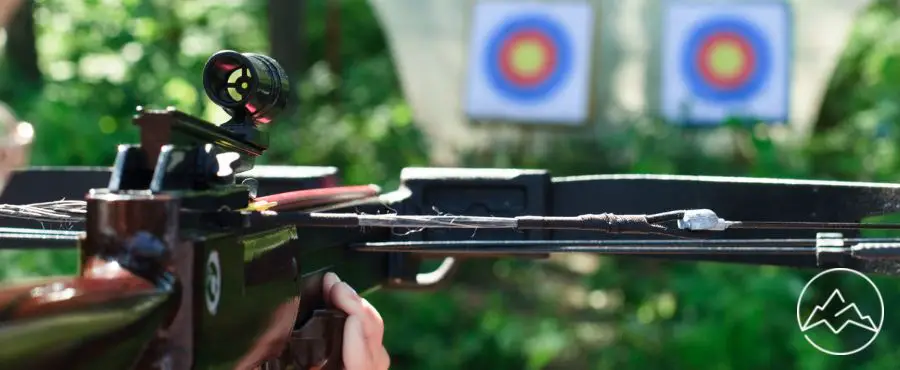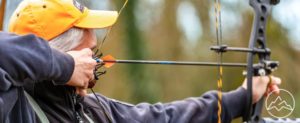Precision Archery: Mastering Bow Sight Aiming Techniques
In the pursuit of precision archery, the mastery of bow sight aiming techniques is of utmost importance. Bow sights, the essential tools for accuracy in archery, employ small pins as reference points for specific distances. The configuration of these pins, ranging from 1 to 7, provides options for archers to tailor their aiming strategies. However, the National Field Archery Association (NFAA) restricts archers to a fixed 5-pin sight. This limitation necessitates a meticulous approach to sight adjustment, beginning with windage adjustment to align the sight block with the point of impact. Shooting on level ground proves to be ideal for this purpose. Once windage is fine-tuned, height adjustment becomes crucial. Grouping pins together in the center of the sight housing ensures clear visibility, while individual adjustments for each distance play a pivotal role in achieving accurate shots. The need for splitting pins arises when shooting distances fall between the set distances, with the closest pin serving as the aiming point. Additionally, pin stacking is employed when targeting distances beyond the farthest pin, referencing the next closest pin and adding 10 yards. Aiming methods, such as utilizing a sight housing or bubble level as an additional point of reference, can significantly enhance accuracy but require diligent practice. By immersing oneself in the archery community, access to exclusive content and resources for further skill development can be obtained. Through the exploration of these bow sight aiming techniques, archers can embark on a journey towards honing their precision archery skills.
Key Takeaways
- Bow sights are essential tools for accuracy in precision archery
- Windage adjustment is the first step in sight adjustment and is best done on level ground
- Height adjustment is crucial for accurate aiming and grouping pins together in the center of the sight housing ensures clear visibility
- Advanced aiming techniques like splitting pins and pin stacking can improve accuracy and consistency at different distances, but require practice and may amplify form issues
What are bow sights?
Bow sights are aiming tools used in archery that consist of pins, with configurations ranging from 1 to 7 pins, and are designed to improve accuracy by providing reference points for specific distances. These pins act as visual markers that archers use to aim at their intended target. Bow sight adjustments are crucial for achieving precision in archery. Windage adjustment, which involves moving the sight block in the direction of impact, is the first step in sighting in a bow. This adjustment is best done when shooting on level ground. Once windage is set, height adjustment is necessary to ensure accurate aiming. By grouping the pins together in the middle of the sight housing, archers can have clear visibility of their target. Each pin is individually adjusted for a specific distance, allowing archers to shoot accurately at various distances. Additionally, bow sights provide numerous benefits, such as improved accuracy, increased confidence, and the ability to shoot at longer distances. Mastering the use of bow sights requires practice and dedication. By joining the archery community, archers can access exclusive content and learn more about the best bow sight aiming techniques.
Aiming with pins
Utilizing the intricate arrangement of pins, archers employ a system of visual markers to direct their arrows towards the desired target, embodying the delicate balance between precision and skill. Bow sights offer various pin configurations, including 1, 3, 5, and 7 pins, allowing archers to adapt to different shooting distances. Each pin is individually adjusted for a specific distance, ensuring accuracy and consistency in aim. When shooting distances between set distances, archers employ the technique of splitting pins, aiming with one pin at a specific spot on the target. The closest pin to the distance being shot is used as the aiming reference when splitting pins. Additionally, pin stacking is utilized to shoot targets beyond the farthest pin. By referencing the next closest pin and adding 10 yards, archers can effectively stack pins for increased shooting range. Mastering these aiming techniques enhances precision in archery and requires dedicated practice.
Advanced aiming techniques
Advanced aiming methods in archery involve the utilization of various techniques such as pin stacking, splitting pins, and individual pin adjustments to ensure accurate and consistent shots at different distances. Splitting pins is necessary when shooting distances between set distances. Archers aim with one pin at a specific spot on the target to help with splitting pins, with the closest pin to the distance used for aiming. Pin stacking is employed when shooting targets beyond the farthest pin. This technique involves referencing the next closest pin and adding 10 yards to stack the pins. By incorporating these advanced aiming techniques, archers can improve their accuracy and precision in long-distance shots. It is important to note that these methods require practice and may amplify any form issues that the archer may have.
Frequently Asked Questions
What is the maximum number of pins allowed in a fixed sight according to NFAA rules?
According to the rules set by the National Field Archery Association (NFAA), the maximum number of pins allowed in a fixed sight is five. This limitation ensures that archers maintain a certain level of accuracy and precision in their aim. When adjusting the windage on a bow sight, it is recommended to shoot on level ground. This ground condition provides the best opportunity to accurately adjust the windage and achieve optimal results in archery.
How should the windage adjustment be done when sighting in a bow?
Proper windage adjustment techniques are essential when sighting in a bow. Windage refers to the horizontal alignment of the sight block, which is adjusted to ensure accuracy. The adjustment is typically made by moving the sight block in the direction of the impact. When aiming with a bow sight, anchor points play a crucial role. These are reference points on the archer’s face that help establish consistent positioning and aid in aiming. By utilizing anchor points and making precise windage adjustments, archers can enhance their accuracy in bow sight aiming.
What is the recommended ground condition for adjusting windage on a bow sight?
The recommended ground condition for adjusting windage on a bow sight is shooting on level ground. This ensures that the impact of the arrows is not affected by the slope of the terrain. The maximum number of pins allowed in a fixed sight, according to the NFAA, is five. This limitation is in place to maintain fairness and consistency among archers. Adjusting windage is an important step in sighting in a bow and should be done under optimal ground conditions for accurate results.
How should the pins be grouped together in the sight housing for clear visibility?
Proper pin grouping is essential for clear visibility in a bow sight housing. Archers often group their pins together in the middle of the sight housing to ensure a clear line of sight to the target. Pin adjustment techniques involve individually adjusting each pin for specific distances, with the closest pin used as the aiming point when splitting pins. Additionally, pin stacking is employed for shooting targets beyond the farthest pin, by referencing the next closest pin and adding 10 yards.
What is pin stacking and when is it used in archery?
Pin stacking is a technique used in archery that involves referencing the next closest pin and adding 10 yards to shoot targets beyond the farthest pin. It is important in archery to have consistent anchor points, which are points on the body that serve as reference for consistent shooting form. Pin stacking allows archers to accurately shoot targets at longer distances, where form issues such as arrow decay and wind drag may come into play.
Conclusion
In conclusion, mastering bow sight aiming techniques is crucial for precision archery. Bow sights, with their small reference pins, are essential tools for accuracy in archery. Windage and height adjustments are necessary for accurate shooting, with groupings and individual adjustments of pins for each distance. Splitting and pin stacking techniques are employed for shooting distances between set distances and beyond the farthest pin, respectively. Aiming methods, such as using a sight housing or bubble level, can further improve accuracy. Joining the archery community provides access to exclusive content and resources for skill development.
One interesting statistic is that the NFAA limits archers to a 5-pin fixed sight. This limitation challenges archers to maximize their accuracy within this constraint and requires them to develop precise aiming techniques to compensate for different distances.











